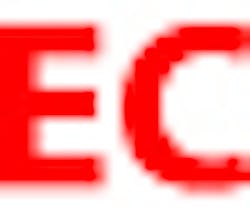Catch-Basin Alternative Reduces Cost of Stormwater Treatment
A large housing developer, seeking efficient alternatives to meeting stormwater requirements, is turning to relatively new technology. To mitigate the impacts of stormwater runoff in the 110-condominium portion of its Willows development in south San Jose, Kaufman and Broad (K&B) installed Continuous Deflective Separation units manufactured by CDS Technologies of Morgan Hill, CA.
Paul Medeiros, P.E., director of land development for K&B, explains, “San Jose is requiring developers to mitigate private street stormwater before it enters the city’s public system.” The city has typically specified catch basin inserts for this purpose. Recognizing that inserts can require frequent maintenance during the rainy season, however, Medeiros began searching for alternatives, and that’s when he came into contact with the CDS system, which works by using the natural motion of water to screen and trap pollutants.
Incoming stormwater is diverted into the unit’s pollutant separation chamber. The water passes through a fine-mesh cylindrical screen and flows downstream, while solids are kept in continuous motion by the swirling flow of the water. Heavier solids eventually settle into a catchment sump, which is periodically emptied by a vacuum truck. To prevent solids from blocking the screen, the flow of the water is balanced so that the force of the flow around the chamber is greater that the centrifugal force pushing pollutants outward toward the screen.
The largest CDS units can handle flows up to 300 ft.3/sec. Large flood flows that exceed the unit’s design hydraulic capacity overflow the bypass weir. CDS units have no moving parts or power requirements, and all the units for the entire Willows storm-drain system have one centralized cleanout location. Sorbents can be added to the units to capture 80-90% of oil and grease.
Following demonstrations and explanation of the system, the city approved its use in the Willows development. “The real winners are the homeowners,” Medeiros believes. Compared to the approximately $26,000 cost for installation of the catch-basin inserts with annual maintenance costs of around $8,000, “installing two CDS units at a cost of $38,000 and an annual maintenance cost of $1,200 made sense, particularly in view of the expectation that the CDS units would pay for themselves in less than three years.”
“So far I think they’ve worked pretty well,” states Medeiros, adding that the first year after installation, during development, presents the greatest amount of material for the system to deal with. “I think over the long term it’ll be a lot lower maintenance for the homeowner’s association.” Since installing CDS units at the Willows, K&B is using them on another project as well.About the Author
Janice Kaspersen
Janice Kaspersen is the former editor of Erosion Control and Stormwater magazines.





